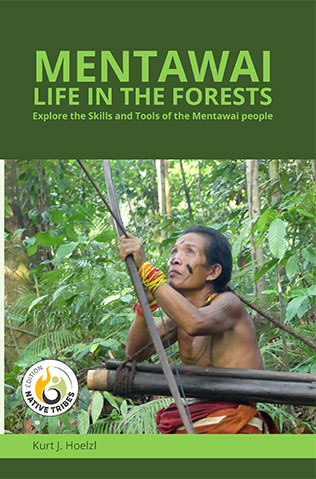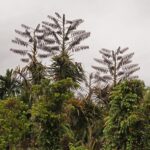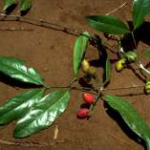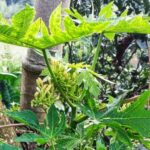- Saba comorensis (Apocynaceae)
- Synonym: Saba florida
- Common name: Dimputu (Kongo) (Mputu = Europe = something which is better).
Description

An extensive forest creeper growing from 20 – 50 m long, scrambling over trees and bushes at the forest edge. All parts exude white milky latex when cut. Bark is smooth and brown. It has brown tendrils up to 12 cm long.

Leaves are large oval to oblong leathery and glossy with a rounded to heart shaped base 7 – 16 x 4 – 8.5 cm and a rounded tip.
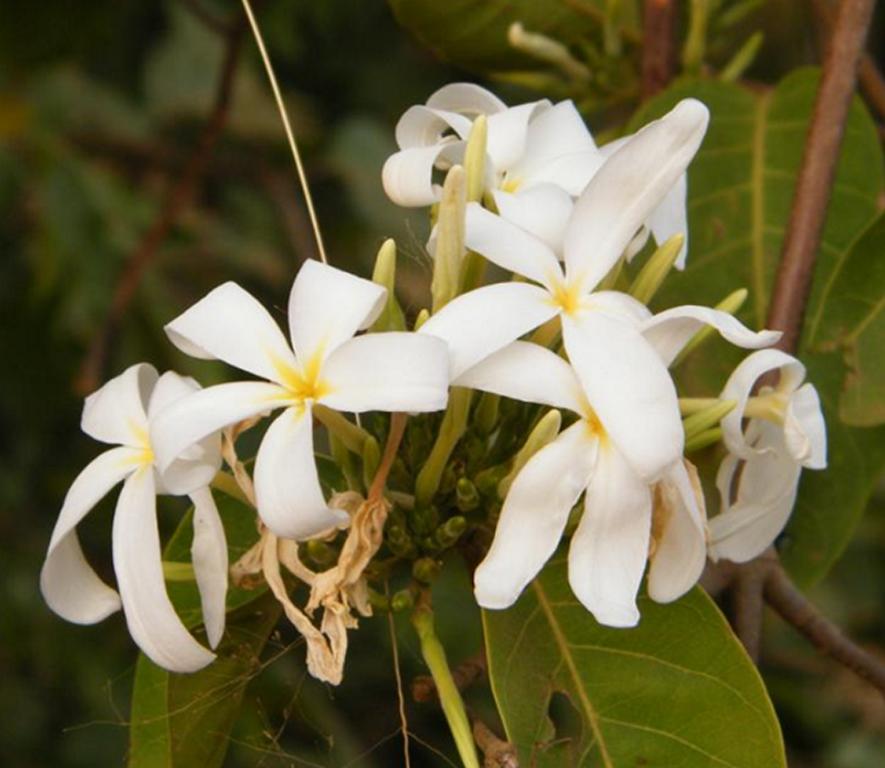
Flowers are in dense terminal bunches, white with a yellow throat, sweet scented and 3.5 cm long.

Fruits are round berries 2.5 – 7 cm with a thick green skin which turns yellow or orange with age containing sweet-sour pulp. The skin dries to a hard brown shell. The numerous seeds are contained in the brown pulp.
Ecology
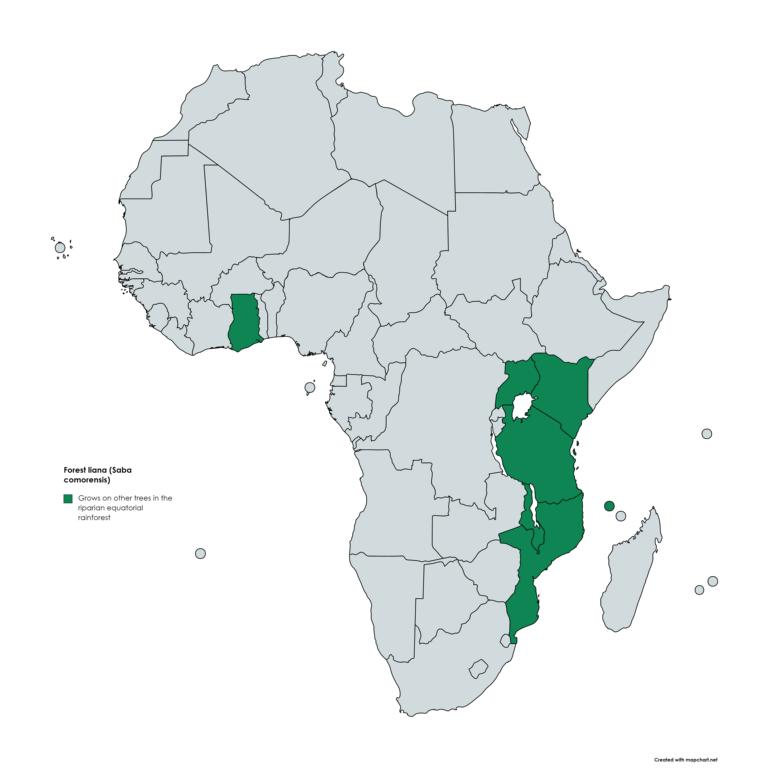
Common at forest edges and in thickets of riverine forest and rain forest. Widespread in West, Central and East Africa to Ethiopia and southern Somalia and also present in Mozambique. It is found on alluvial sandy clay or on rocky ground.

Uses
- The latex is hard and resinous and sometimes used to adulterate that of Landolphia owariensis. Children use it to make balls.
- The edible fruits are very popular. They are cut open; the seeds are sucked, and the pulp eaten. The pulp has a sweet-sour taste, similar to tamarind.
- An infusion made from the leaves is used to relieve back-ache and hypertension.
- A boiled root decoction is drunk to treat rheumatism and infertility in women. Rubber used to be extracted from the plant during the 1939 – 45 war.
References
Gillet & Pâque 1910, Gillet 1927, Renier 1948, Daeleman & Pauwels 1983, Beentje 1994, Katende et al. 1999, Maundu 1999, Neuwinger 2000, Ruffo et al. 2002
__________________________________________________________________________________________________________
Text and all photos in this article © Paul Letham & Augustin Konda Ku Mbuta. Professional background and contact information of the authors of this article can be found here.
.

